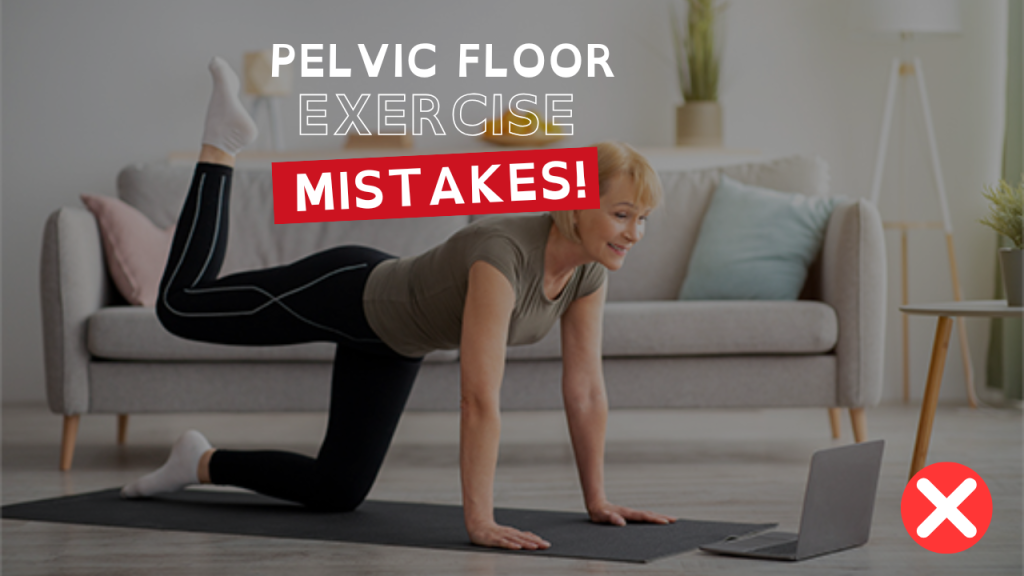Pelvic floor exercises—commonly known as Kegels—are often touted as the secret weapon for a stronger core, better bladder control, improved sexual health, and even enhanced posture. But here’s the catch: doing them wrong can be just as ineffective as not doing them at all. In fact, many people unknowingly make critical mistakes that not only reduce the benefits but can also create new issues.
Whether you’re a new mom, a fitness enthusiast, or someone looking to improve pelvic health, understanding the right way to engage your pelvic floor is crucial. Let’s dive into 7 common mistakes people make during pelvic floor exercises—and how you can fix them to maximize your results.

1. Engaging the Wrong Muscles
Mistake: Many people mistakenly activate their glutes, inner thighs, or abdominal muscles instead of the actual pelvic floor.
Why It Matters: Using the wrong muscles can lead to muscle imbalances, poor posture, and zero improvement in pelvic strength.
Fix It: Visualize lifting the muscles between your pubic bone and tailbone as if you’re stopping the flow of urine or preventing gas from escaping. Avoid clenching your butt or abs.
2. Holding Your Breath
Mistake: Breath-holding is a common error, especially during intense contractions.
Why It Matters: Breathing and pelvic floor function are deeply connected. Breath-holding increases intra-abdominal pressure, which can strain rather than strengthen your pelvic floor.
Fix It: Exhale as you contract the pelvic floor and inhale as you relax. Incorporating diaphragmatic breathing can enhance the effectiveness of your exercises.
3. Skipping the Relaxation Phase
Mistake: Constant contractions without allowing the muscles to relax.
Why It Matters: Just like any other muscle, the pelvic floor needs to contract and relax to function optimally. Tension-only training can lead to pelvic pain or overactive pelvic floor syndrome.
Fix It: After every contraction, fully relax your muscles. A good rule: if you contract for 5 seconds, relax for 5 seconds too.
4. Doing Too Many Repetitions
Mistake: More isn’t always better. Overtraining the pelvic floor can lead to fatigue and even dysfunction.
Why It Matters: Muscles need time to recover. Overdoing it can weaken rather than strengthen your pelvic floor.
Fix It: Stick to a balanced routine—typically 10 repetitions, 2–3 times a day is sufficient unless otherwise advised by a pelvic health professional.
5. Not Progressing the Exercises
Mistake: Staying at the beginner level and not challenging the muscles as they get stronger.
Why It Matters: Muscles respond to progressive overload. Without increasing intensity, endurance, or incorporating movement, your pelvic floor won’t get stronger.
Fix It: Add resistance through core exercises, change positions (sitting, standing, squatting), or integrate your pelvic floor work into daily movements like lifting or bending.
6. Ignoring Posture
Mistake: Performing exercises with poor alignment, such as slouching or arching the back.
Why It Matters: Posture affects how effectively you can engage your core and pelvic floor. Misalignment can hinder activation and reduce results.
Fix It: Sit or stand with a neutral spine, shoulders relaxed, and feet grounded. Imagine your pelvis like a bowl of water—keep it level during exercises.
7. Not Seeking Professional Guidance
Mistake: Relying solely on online videos or written instructions without assessing personal needs.
Why It Matters: Everyone’s pelvic floor condition is different—some are too weak, others too tight. DIY exercises may not be appropriate for all cases.
Fix It: Consider consulting a pelvic floor physical therapist, especially if you experience symptoms like incontinence, pain, or prolapse. A personalized plan ensures safety and effectiveness.
Bonus Tip: Pelvic Floor Health Isn’t Just About Exercise
While exercise is important, pelvic health is holistic. Diet, hydration, stress, hormones, and overall fitness play major roles. Chronic stress, for instance, can keep your pelvic floor in a constant state of tension, negating the benefits of exercise.
Quick Pelvic Floor Health Checklist:
- Drink enough water daily
- Avoid constipation (fiber-rich diet)
- Don’t “pee just in case”—wait until your bladder signals
- Incorporate relaxation techniques like yoga or deep breathing
Final Thoughts
Pelvic floor exercises are powerful—but only when done right. Avoiding these common mistakes can drastically improve your results, whether your goal is to reduce leakage, support postpartum recovery, or boost sexual health.
Remember: your pelvic floor is a key part of your core system. Treat it with the same care, attention, and progression you would give any other muscle group.
Now it’s your turn—are you really doing Kegels right?
Take a moment today to reassess your technique, and if needed, seek expert guidance. Your core—and confidence—will thank you.





